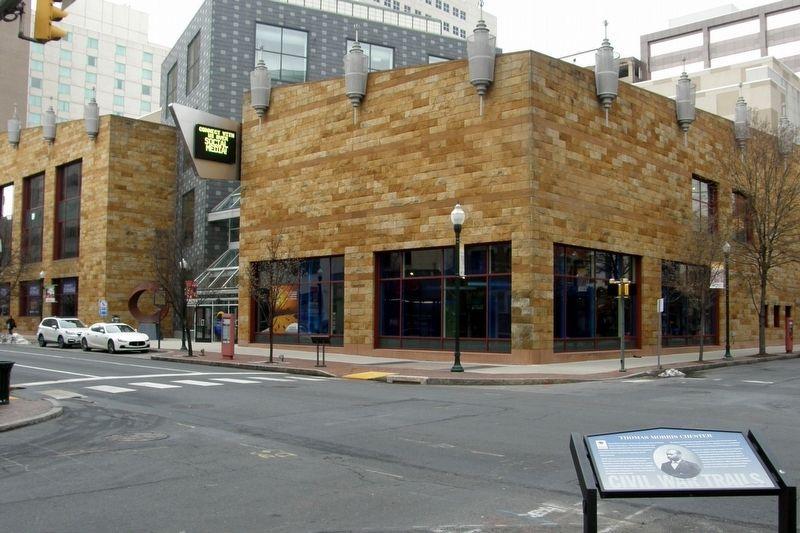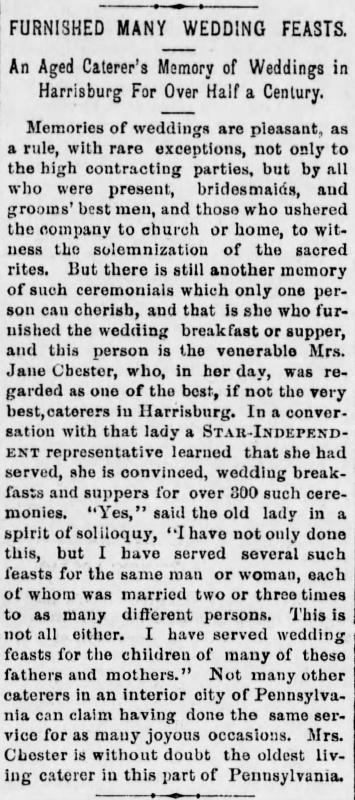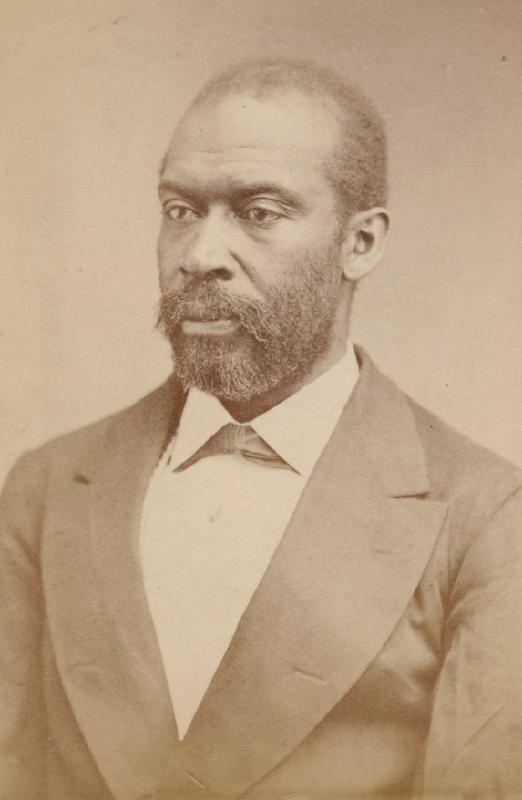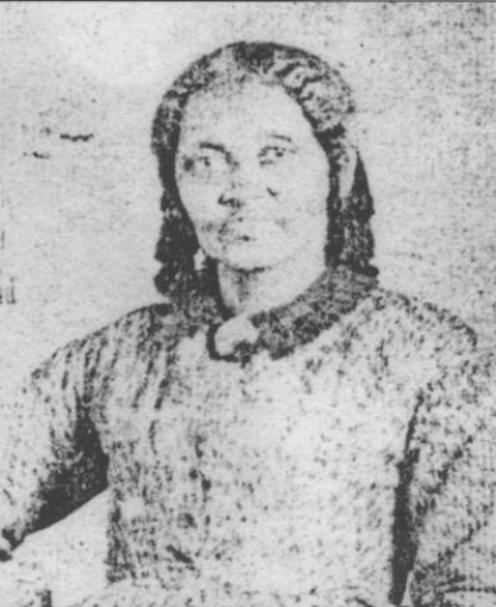
Like all great figures, T. Morris Chester was not created in a vacuum. This piece explores the context surrounding him, specifically his parents George and Jane Chester, and their own civil rights efforts in Harrisburg, Pennsylvania.
On May 11th, 1834, a child was born in the second-story apartment above an oyster shop on Market Street. That child was Thomas Morris Chester, who went on to become one of Harrisburg’s most prominent civil rights leaders. Chester is remembered for his role as the United States’ first Black war correspondent, his advocacy for Black citizenship, and many other contributions. Today, Chester is the centerpiece of many Harrisburg initiatives to honor local Black history and advocacy, including this civil rights tour. Chester’s legacy truly begins with his parents, George and Jane Chester. The Chesters were activists in their own right, as well as the owners and operators of an oyster house that served as a locus of abolitionist activity in the mid-nineteenth century.
The exact location of the Chesters’ oyster house and restaurant is difficult to pin down, though, in the 1840s, the restaurant was situated in the basement of a building that, according to local historian George F. Nagle, “flanked the county property…to the east.” This means that the restaurant was in some way connected to the county courthouse of Harrisburg - the very place where Frederick Douglass was egged after giving an abolitionist speech in 1847. Additionally, there are records to indicate that the restaurant sat on the corner of Third and Market Streets beginning in 1856. Historians believe either that the building in question was one long structure, extending all the way to this corner from the Courthouse property, or that the Chester family relocated to the building on the corner in 1856. This house hosted myriad freedom-seeking people of all kinds. Not only did it function as a social spot for civil rights activists but also as a stop on the Underground Railroad for those escaping the clutches of slavery.
The house on Market Street belonged to George Chester, the patriarch of the family. Though little is known about George, he clearly was someone deeply involved in fighting for Black Americans’ civil rights. He was Harrisburg’s only agent of the Liberator, a well-circulated abolitionist newspaper published by William Lloyd Garrison, which ran from 1831 to 1865 and was the most widely circulated publication of its kind.
It is also known that George was present when a young woman named Jane arrived in York, Pennsylvania after escaping from enslavement in Maryland. Jane M. Chester, Thomas’ mother, was born into slavery and, according to later accounts, was possibly enslaved four different times before she escaped from Maryland in 1825. Though the journey from Maryland to Pennsylvania may seem like a comparatively small distance, there was no Underground Railroad at this point to aid Jane in her journey. In addition, there is evidence to suggest that she walked barefoot the entire way. To make matters more dire, slavery was still occurring in Pennsylvania at the time of her journey, the last recorded case in the state ending in 1847. Jane surely had her work cut out for her.
Upon arriving in York, she met George Chester, and the two went on to wed and settle in Harrisburg. Together, they had as many as twelve children, according to London’s Inner Temple. However, only Charlotte Chester, Thomas Morris Chester, David Chester, Harriet Chester, Maria(h) Chester, Amelia Chester, and Eliza Chester Zendricks survived into adulthood. In the city, she worked with her husband in providing a safe place for freedom seekers and activists. George and Jane capitalized on the relatively lucrative, high-demand business of oystering in order to build a successful life for themselves and to help to make it possible for their fellow African American peers to endure. At the time, there was a relative boom in demand for seafood, and being an oysterman was one of the most profitable jobs a Black man could hold. Because of this position of marginal privilege, many oyster people were connected to the abolitionist movement and the fight for civil rights.
Following George’s death, Jane M. Chester moved her place of residence as well as business to 305 Chestnut Street – a house which she owned as an African American widow in the 19th century. It was exceedingly rare for either women or African Americans to own homes in the city during this time, let alone someone who belonged to both categories, but this was far from the only spectacular thing about Jane.
She not was not only a prominent activist for equality, but also a key figure in greater Harrisburg, working as an accomplished chef who served the entire community. She was renowned for her skill, and this led to her being a key figure in Harrisburg during her lifetime, all while hosting a wide variety of people from all walks of life in her house from a diverse mix of races, classes, and social standings. The following quote, taken from a Harrisburg Telegraph article in 1894, titled “Aunty Chester Dead,” reveals the impact that she had on the community amid her continuous struggle for justice:
“During the later years of her life she was in the habit of going about among the business offices and hotels…no great feast or fashionable entertainment was complete without her presence and assistance. She was a consistent Christian and had many friends among all classes of citizens. During her life she saw many famous men, and…she could relate interesting incidents of the visits of distinguished public men to [Harrisburg].”
After the death of George, Jane continued to operate the oyster business out of the family home on Chestnut Street, carrying on the Chester legacy by hosting wakes, celebrations, and civil rights meetings in the very place where she raised her family. In short, Jane carried on the family business of serving the community by promoting justice all while serving delicious seafood.
It is no wonder then that Jane passed her passion for serving the community and fighting for civil rights on to her children. This outstanding woman survived the clutches of slavery and lived long enough to help those escaping, just as she did, by allowing freedom seekers traveling on the Underground Railroad to stay in her home. One can only imagine the influence that this had on her family.
Tragically, Jane outlived most of her children, dying on April 20th, 1894. Thomas Morris Chester himself passed away just under 2 years earlier on September 30th, 1892. However, the pain of burying her beloved children did not stop her from fighting for what she believed in. Through hosting, serving, and providing for those fighting for their rights, she set an example for her children, something that most mothers strive to do. Significantly, her house was at the epicenter of this. She opened her home to the downtrodden, served the community out of her own kitchen, and it appears as though all who turned to her for whatever reason were welcomed with open arms.
After her death, this legacy of Chester hospitality continued as Jane’s daughter, Eliza Zedericks, lived in the home with her husband into the 20th century. Like her mother, she utilized the family home for organizing and providing hospitality to figures traveling through the city.
The location of the Chester family business may have changed locations, but the legacy of the Chester Oyster House remained the same. Currently, Market Street boasts a historical marker where all can pay witness to that legacy which inspired so many to follow in her footsteps in the past and still has the power to do so today.
A full list of the resources used in this story can be found here.
Related Stories
A Gathering at the Crossroads
Harrisburg's Role in the Underground Railroad
Images



